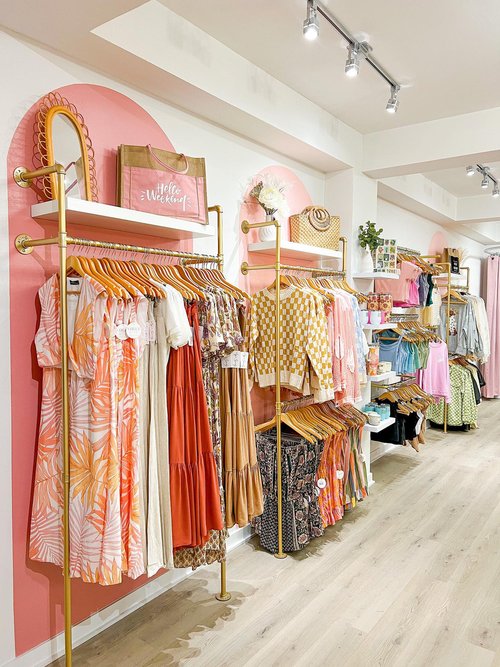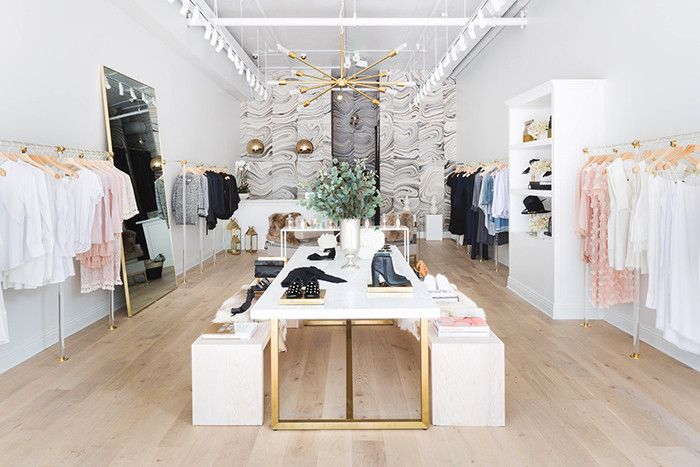How to Style Your Outfits with Boutique Fashion Locates
How to Style Your Outfits with Boutique Fashion Locates
Blog Article
Checking Out the Evolution and Effect of Clothes on Modern Style Trends
The development of apparel has significantly affected modern style patterns, combining historical criteria with cutting-edge innovations. Legendary figures like Coco Chanel and Yves Saint Laurent transformed the garment industry by introducing concepts that focus on comfort and ease of access, which continue to reverberate today. Technical strides in locations such as 3D printing and clever fabrics are redefining design possibilities and consumer experiences (boutique fashion). Additionally, the expanding focus on inclusivity and sustainability is improving industry criteria. As we consider these diverse influences, one must question how these elements collectively redefine fashion's role in reflecting and shaping modern society.
Historic Style Influencers
In the tapestry of fashion history, specific numbers have left an indelible mark, shaping the fads and styles that specify entire periods. Coco Chanel, an advanced designer, redefined ladies's style by introducing comfortable, sophisticated clothing that departed from restrictive bodices. Her legendary Chanel suit and little black gown have actually come to be classic staples in closets worldwide. Similarly, Christian Dior's post-war "Face-lift" in 1947, with its event of womanhood through complete skirts and cinched waists, noted a go back to opulence and has actually remained to influence developers.
Elsa Schiaparelli is another crucial figure, renowned for her avant-garde layouts that integrated surrealist art, collaborating with Salvador Dalí to create wayward pieces that challenged standard aesthetic appeals. Her innovative use of color and vibrant patterns resounds in modern fashion. Yves Saint Laurent, on the other hand, democratized high fashion with prêt-à-porter collections, bringing path styles to the masses and setting a criterion for modern ready-to-wear lines.
These dreamers, to name a few, not only reinvented style in their times but likewise set sustaining fads that resonate in today's apparel industry, giving a foundation upon which modern-day developers remain to innovate and construct. Their legacies highlight the relevance of imagination and bold in vogue's ever-evolving story.
Technological Innovations in Fashion
Amidst the vibrant landscape of the fashion business, technical innovations stand at the forefront of advancement, reshaping exactly how designers produce and consumers involve with style. The integration of 3D printing has transformed layout procedures, making it possible for designers to try out complicated frameworks and lasting materials that were previously unthinkable. This technology assists in rapid prototyping, decreasing waste and speeding up manufacturing times.

Smart fabrics, installing technology into textiles, are likewise changing the market. Advancements like self-cleaning and temperature-regulating fabrics use improved performance and comfort. Wearable innovation, including functions like physical fitness tracking and communication, includes a brand-new measurement to style, merging aesthetic appeals with practicality.
Social Shifts and Design
As technical innovations continue to improve the fashion business, cultural changes are similarly significant, redefining style and customer preferences. In recent times, the increase of social media sites platforms has actually sped up the circulation of global fashion fads, permitting diverse cultural influences to assemble and exist side-by-side. This electronic interconnectivity has actually promoted the quick exchange of concepts, leading to an extra comprehensive and eclectic analysis of style that reflects the multifaceted nature of modern culture.
Social understanding and recognition have actually triggered designers to attract ideas from a more comprehensive range of historic and ethnic contexts, incorporating standard themes with contemporary visual appeals. This combination has led to fashion that resonates with a broader target market, advertising a sense of identity and belonging throughout different demographics. In addition, the raising need for personalization has driven brand names to use adjustable choices, making it possible for customers to reveal originality while showing their cultural heritage.
In addition, changing societal values have actually affected fashion, with inclusivity and diversity coming to be main motifs. The market has actually begun to embrace versions and influencers of various physique, ethnic cultures, and gender identities, tough traditional charm criteria. This change emphasizes the power of cultural changes in shaping the future of style, as style comes to be a more genuine expression of personal and cumulative identity.
Sustainability and Modern Layout
While the fashion sector remains to develop, the vital for sustainability has become progressively urgent, affecting modern layout techniques. This change intends to attend to moral factors to consider and ecological problems, bring about a reevaluation of conventional a fantastic read production methods. Designers are currently incorporating sustainable materials, such as organic cotton, recycled polyester, and biodegradable materials, into their collections, lowering the environmental impact of fashion. The rise of slow fashion, which highlights high quality over amount, urges consumers to invest in timeless pieces as opposed to transient patterns.
Additionally, modern design is characterized by its innovation in minimizing waste and promoting circularity. Techniques such as zero-waste pattern cutting and 3D knitting are acquiring traction, allowing developers to develop garments with marginal textile waste. Furthermore, brands are embracing transparent supply chains, making sure responsibility and cultivating consumer depend on. This technique not just reduces ecological impact but also enhances the social obligation of fashion houses.

Future Trends in vogue

Sustainability will certainly continue to be a driving pressure in forming future style trends. The sector is significantly taking on eco-friendly products and honest production methods, reacting to an expanding consumer need for responsible practices. Innovations such as bio-fabricated products and closed-loop recycling systems are readied to redefine just how garments is created and eaten, minimizing environmental impact while keeping design and high quality.
Cultural shifts, consisting of the surge of inclusivity and variety, will certainly also play a pivotal role. As society becomes much more familiar with social problems, style is expected to become a platform for expression and adjustment. Designers will likely concentrate on producing collections that show a broader series of identities and experiences, championing depiction and accessibility.
Final Thought
The evolution of garments significantly affects modern-day fashion patterns, where historic influences merge with modern layouts. This continuous evolution discover this emphasizes fashion's function as a mirror to societal values and technical advancement, recommending a future abundant with innovation and inclusivity.
The development of clothing has significantly influenced modern style fads, merging historic precedents with cutting-edge technologies.In the middle of the dynamic landscape of the style industry, technical advancements stand at the center of advancement, reshaping just how designers develop and consumers involve with fashion.While the style sector continues to progress, the essential for sustainability has ended up being significantly immediate, affecting modern layout techniques. As sustainability ends up being embedded in modern-day layout, it paves the way for an extra liable read this and mindful fashion industry.
The advancement of clothing significantly influences contemporary fashion trends, where historical influences combine with modern layouts.
Report this page